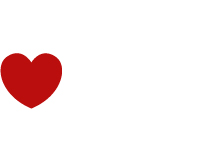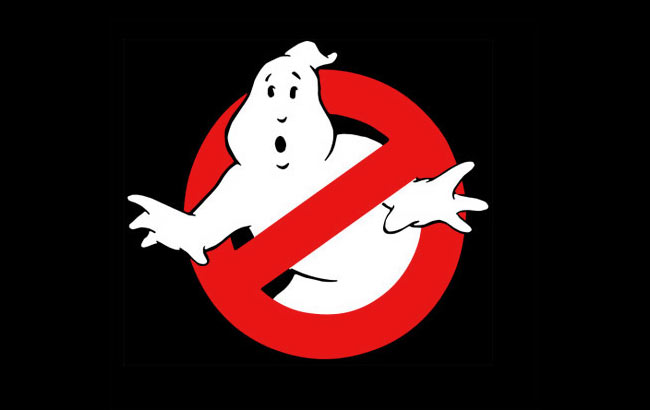
I don’t see how sifting through thousands of disparate symbols, illustrations, photos, and clip art, is the right use of time and resources. It’s difficult to judge submissions effectively when shown in isolation. Some context and a variety of brand marks would be hugely beneficial for achieving consensus on any single direction, especially with a jury of 30 people (interestingly including Nobel Peace Prize laureate Mikhail Gorbachev) as well as 12 others drafted in to help with the process.

These thoughts from the swissmiss comment thread present a stronger direction:
“It would’ve been a better idea to hire a number of acknowledged designers to create their versions and then let the people of the world decide.”
— Silver Sova
If design can be crowdsourced, that’s how it might work — where crowds give an opinion on a variety of pre-designed outcomes, not where crowds do the actual work in the hope of catching a carrot (referencing spec websites).
And by hiring, money doesn’t necessarily need to be exchanged. Pro bono design is always an option for worthy non-profit causes. It’s like Armin said, “The problem with noble spec is that it attracts too many hippie logo designers.”
—
Update #1:
Elsewhere, graphic designer Elizabeth Eadie shares her thoughts.
Update #2:
The contest’s over. Here’s the chosen Human Rights logo.




Comments
Totally agree. Those samples above are a mess (with all the respect for their “designers”).
By the looks of things, even children were entering the contest. Or were the ‘designs’ produced from the second image submitted by actual “designers”. The mind boggles…
It just seems to be a collection of re-hashed, copied, trend following concepts.
Nothing original….
just browsed through a few pages of “logo’s”. I’ll be surprised if any of them get picked, because they are mostly terrible. When are companies going to get the fact that everybody has his/her own specialty, and nobody can do everything. This is a perfect example that shows NOT everybody can make a decent logo. Some of them are just clipart! Stick to what you’re good at people…
Besides my issues with spec work, a huge problem with contests like this is everybody can:
-see all submitted work and therefore designers copy/steal/mimic ideas because their creative process get pigeon holed when they see the “recommended by experts” submissions so there ends up being much of the same.
-submit as many times as they like. Thumbing through the pages, the “designers” have an idea, execute it in a few hours (at most), and submit it. Then they refine/rehash their idea and submit it again. And is repeated a lot. The site ends up with an inflated number of submissions, but in reality most of them are poorly executed triplicates that weren’t well thought out in the first place.
There is no creative process. There are no feedback loops. There are no critiques. There is no communication. And on top of that, there is a bunch of group think that ends up producing more of the same.
I have better things to do with my time. Good luck to those who enter, who knows they may even pick one lucky ‘designer’.
Thanks David for the great websites and your interesting observations. Love the book too.
I agree, this is not the way to produce an identity. I am a graphic designer and recently had my first experience with crowdsourcing. I presented three logo concepts to a client, who liked them but wanted to explore submissions from a crowdsourcing website.
The client received about 130 submissions. I then presented a second round of three refined options and the client much preferred each one of these over all of the 130 crowdsourcing submissions.
An interesting observation. Cheers
Is it just me or is a bit weird that this logo
‘will be made available in the public domain, free to be used by anyone, anywhere.’
Completely agree that crowdsourcing this is pretty rubbish…
Crowdsourcing many things can be pretty rubbish…
Was there a creative brief for this mess?
The selection above look as though they are sourcing their logos from a primary school? But this isn’t the first time I’ve seen shocking designs chosen to go through to a final round. Mind you, I don’t think the people selecting the winning logo were actual designers otherwise they’d have known better I’m sure
This statement from their information sheet says it all:
“The winning logo will become an open source product, free to be used and adapted by everyone, everywhere without restrictions.”
So they’re going to produce a rubbish logo which will then be free for anyone to use and adapt however they like.
Hardly the best way of achieveing their stated objective of a “globally recognized logo for human rights” methinks.
Oh, and if it really is “the greatest creative challenge in history” can we have a bit more than 5000 euros as the prize, please?
If they’re trying to save money, it doesn’t make sense. They have to spend hours sifting through all the free logos.
It’s interesting that a group standing behind a human rights logo would advocate what is essentially slave labor.
G.
I actually enjoyed the website design and layout more than any logos I saw.
To try to find a “logo” for human rights a contest of this kind seems to me the solution “socially” more effective and graphically more “democratic.”
Very close to the concept being represented and with the same spirit.
Than 10 renowned designers make their proposals and then vote on them seems to accept that the G20 decide economic policy of other countries.
Why can not choose the proposal for an anonymous citizen, a student, a beginner designer, a painter… if the right idea, the stroke needed, the brilliant concept?
The examples in the post have been selected to demonstrate the opposite but among the more than 2,000 proposals are very interesting designs.
And if you end up not choosing a good design may be because the “real designers” have neither the time nor are they financially compensated enough to send their proposals …
I dont like competitions, never participated, but in this case I think a successful contest, I guess like Erik Spiekermann, Javier Mariscal, Max Kisman, Tina Roth Eisemberg, Candy Chang, Marian Bantjes, Philipe Apeloig and Ahmad Humeid, members the jury of this contest.
I agree that this is not the best way to find a solution, however, could it be argued that this project is more about raising awareness than actually finding a brand identity?
It reminds me a bit of the Gap ‘rebrand’, where it went viral due to it’s awful results, and therefore increasing their online visits and sales during that period by about 30% (I read somewhere).
I don’t know if this is the case, just raising the question!
I’m probably not going to make any friends by saying what I’m about to say.
I’m not a professional designer, I’m a printer and for about a year now I’ve been submitting design work to crowdsource websites. This for me is great because I like creating designs as a hobby. I couldn’t careless if I won any of the contests, I just like using Illustrator and Photoshop to create designs. Simple. Don’t get me wrong, I totally understand the pro designers comments and the way they feel about spec work.
I think the idea behind this contest is to give the opportunity to the whole world to put ideas across. This is a human rights logo and all humans have the right to have a go at it.
I would suggest even if there was no prize money involved there would still be the same amount of interest. Professionals and amateurs alike.
This contest and the numerous contest sites on the web are nothing new. It’s been going on for years. When I was at college ( studying print ) there was a contest to design the new college logo, this was back in 92. The college was split into two sites, one for general A level students and one for graphic arts and media. Every body within the college could enter. It was a graphic design student who won it. So I really wouldn’t be worried about some of the so called rubbish that’s in this contest. The winner will be from the professional graphic design fraternity to be sure.
Peace.
The only reason many ‘professionals’ are against this process for designing the Human Rights logo is because it hurts designers egos and their pride to think that possibly, just possibly, the winning logo might be designed by a child or an amateur!
As the site says, a logo for the people by the people! And I say bravo to this! I’m a designer, and have been for over 15 years – and one thing I’ve learned in my time is never under estimate your clients or assume you know better than they do. I doubt that this whole venture is something that’s been thrown together willy-nilly! The brains behind this site clearly understand the value of input from all walks of life and the wisdom and insight they can bring to the process! All that would happen if you went to a design or brand agency is a version of a logo the agency feels is right with an appropriate cost far in excess of what is being offered here. And that’s just it, which agency would you use? The collective resources, ideas and knowledge of the people of the world is far greater than any design agency can offer – end of!
David Macfarlane says it perfectly, the process is more about highlighting the plight of Human Rights as much as it is about designing a logo.
I just find it ironic that a Human Rights organization is asking for thousands of hours of free work from designers around the globe. Organizations like the Red Cross, Salvation army who are non-profit, trust their AOR & do not use crowdsourcing & contests to come up with their brilliant ad campaigns. A logo project is no different. Take a look at these ads for the Canadian Red Cross & Salvation Army:
http://www.creativeguerrillamarketing.com/guerrilla-marketing/stupendous-steps-15-great-escalator-stair-ambient-ads/
http://www.salvationarmy.ca/2006/11/13/the-salvation-army-2006-christmas-ad-campaign/
But this is just my opinion. For students, this is a great exercise, but as a professional, I just don’t agree with contests.
I’d have to say the contest shaped up pretty well. Some very nice marks submitted.
Guys, the top 10 logos are out– am I the only who thinks none of them works? I remember seeing better logos during the submission period, but I guess they didn’t qualify for the top 10. The doves are overused for peace, one looks like underwear, another looks like someone sleeping on top of his folded arms; another looks, um, gynecological while one reminds me of a handicap symbol. The rest are generic. The mass voting process for this competition really didn’t give the better designs the chance, what a shame. I don’t mean to be snarky, but for a controversial competition, I was really hoping for an impressive winner to offset the negativity and prove the naysayers (me included) wrong.
Couldn’t agree less with you @Derren Lee Poole. The opportunity in any design job is for designers to add value with insightful recommendations. Insightful recommendations only result from a comprehensive, accountable process.
Crowdsourcing is neither comprehensive nor accountable; but a natural bedfellow of following client orders at any cost. The cost is often opportunity.
‘Opportunity cost’ is an economic term relating to choosing one use of time and resources over another. Your attitude of blind order fulfillment, Derren, is costing your clients and they deserve better.